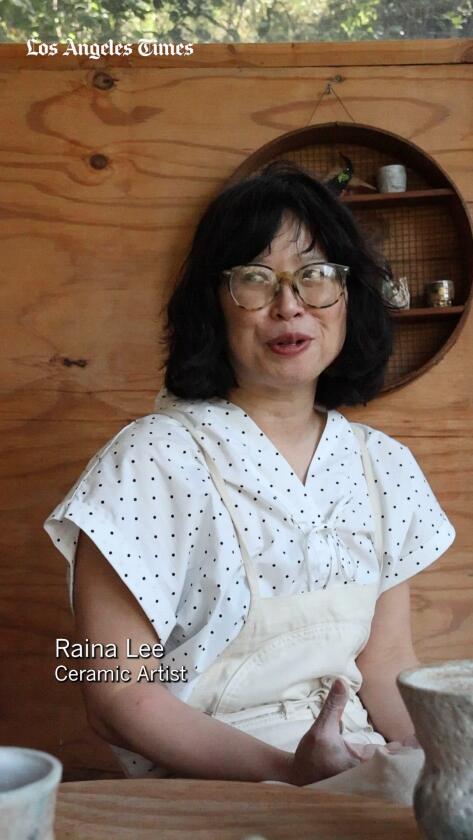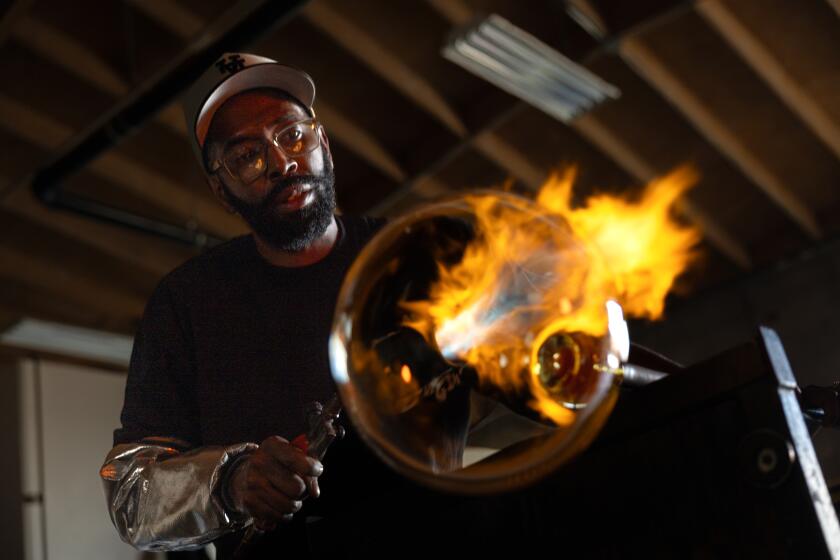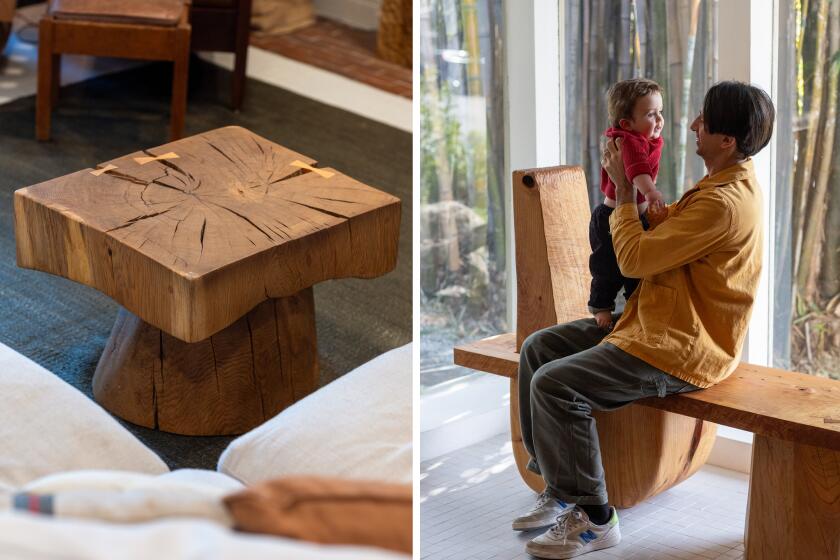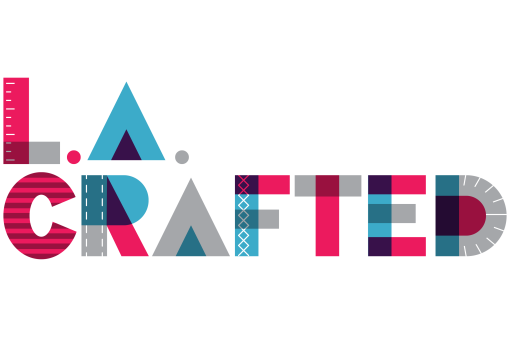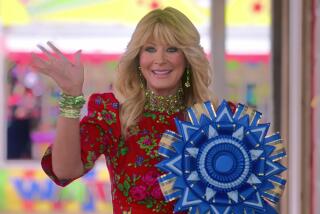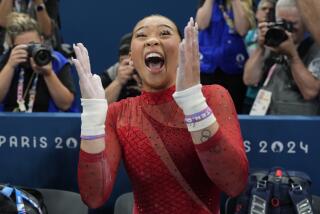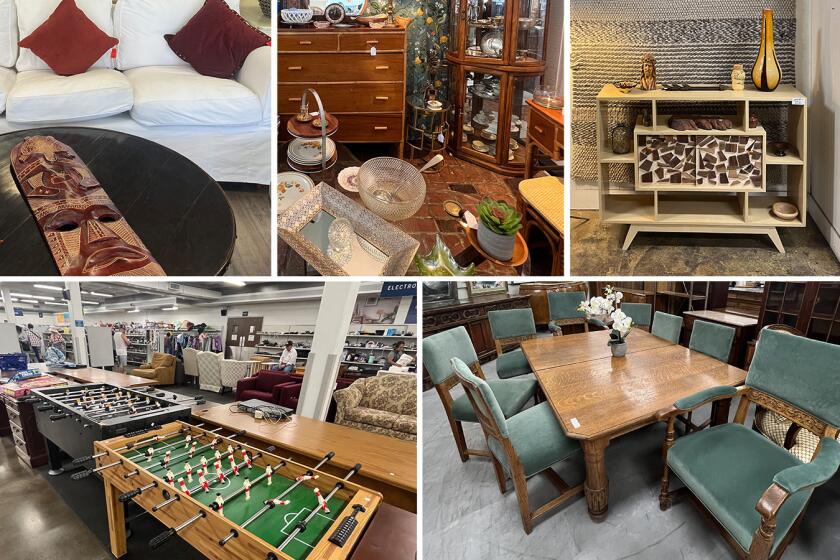
- Ceramist Raina Lee’s tree-house studio is perched on a slope in her Mount Washington backyard. It’s home to dozens of her ceramic works, available for viewing by appointment.
- Nature is Lee’s main source of inspiration. Along with traditional techniques with kilns and pottery wheels, she has taken an interest in 3D printing for some of her newer works.
To get to ceramist Raina Lee’s tree house, you enter through an iron gate with a dog warning sign and climb a long wooden staircase that creaks beneath your feet. You’ll then cross a suspension bridge, and you’ll hear, “Be careful, it’s very wobbly,” before seeing Lee, 48. There, you’ll likely find her with a mug in hand, leaning against the door frame of her tree house and waiting for you to join her at a Japanese-style tea table.
Her serene retreat feels like a cabin in a national park, yet it’s perched on a slope in Lee’s Mount Washington backyard, shaded by Brazilian pepper trees. The studio is home to dozens of her ceramic works, available for viewing by appointment.
Lee’s pieces range from small tea bowls ($640) to large moon jars ($4,800), and her works can be found at high-end galleries such as Rhett Baruch in Hollywood and Verso in New York. For Mother’s Day, Thanksgiving, Christmas and other holidays, she has sales of smaller, more affordable wares.
Video by Grace Xue
Every year, Lee’s family members get “Christmas ceramics” as gifts from her.
“I tried to give vases and cups to my aunt, but she doesn’t use them,” she says. “She put them on top of her fireplace to display. I’m like, ‘You know you can just use them. It’s not that valuable.’”
Modesty aside, Lee’s artistic journey began “by accident” in 2016 in Brooklyn, N.Y., where she was living next door to Choplet, a ceramics studio and gallery. That’s where she began making pottery.
After switching to a 24-hour studio called Clay Space, Lee and friend Minh Singer spent countless night sessions together.
“We would bicycle and somehow meet somewhere on the way, ‘Goonies’-style, and then ride over to the studio at night and stay until 4 a.m.,” Singer says. “She was very experimental and funky at night, and at daytime, she would throw and do more technique.”
Lee, a former journalist who covered the tech and gaming industries, says she found satisfaction in the way ceramics allowed her to create “tangible objects from start to finish.”

When she transitioned to ceramics full-time, her family thought she was “really crazy,” she says. Lee, the daughter of Taiwanese immigrants, grew up in Rancho Palos Verdes. She says that art wasn’t a common pursuit in her family and that perhaps the closest thing she got to witness was her grandma’s occasional hobby of traditional Chinese painting.
“But I think I’m old enough now where no one is questioning that kind of stuff,” Lee says. “Maybe if I were 20, that would have happened. But now, it’s like nobody cares.”
While living in New York, Lee joined a glaze-mixing class at Greenwich House Pottery, which sparked her interest in creating her own.
For the record:
11:08 a.m. Sept. 25, 2024An earlier version of this story stated that Raina Lee and Mark Watanabe are married. They are partners. Also, Lee is the owner of her Mount Washington home.
After moving back to Los Angeles in 2017, Lee was able to expand her ceramics possibilities. She bought a house, which her partner, architect Mark Watanabe, helped remodel along with the tree house. In her studio, Lee has placed her kilns and pottery wheel and tried alternative firing techniques such as raku and pit firing.

Having a home studio has made it easier for Lee to experiment with pottery glazes. She‘s most proud of her volcanic glazes; they are applied before pottery pieces are fired in a kiln for four to 12 hours. The result? Unique crackly textures that are uneven to the touch, either bumpy or pitted, much like craters on the moon.
Because her glazes are formulated with minerals, she jokingly says her works “end up looking like rocks again.”
“For example, when you look at oyster shells, they have an iridescence of pearly green and blue, and that’s definitely from minerals like copper,” she says. “I just find it interesting that it’s the same materials recombined into something else, because everything in the earth is sort of like one thing.”

Nature is Lee’s main source of inspiration. When she’s not throwing clay on a wheel or hand-building clay pieces in her studio, she is in the wilderness around the country going on hikes and finding inspiration, which she posts about on Instagram, in addition to posts about her ceramics work and shows.
Ted Vadakan, a friend of 20 years, says Lee often takes reference photos along the way and uses her watercolor to paint what she saw and what inspires her at the end of each day of hiking.
“She’s always observing things normal people don’t see,” says Vadakan. “She’ll be on the bluffs of the ocean and notice all the moss and lichen growing in different volcanic rock formations. I think all those textures and colors that she sees are very apparent in her works.”
Los Angeles glassblower Cedric Mitchell relishes his role as a rulebreaker. “I wanted to break all the design rules similar to Ettore Sottsass,” he says, “and develop my own style.”
Lee’s experimentation with sculptural glazes and alternative firing techniques has gained the attention of art dealers and curators such as Claire Vinson and Philip Williams of Stroll Garden, a Los Angeles-based gallery for contemporary ceramics and sculpture, particularly works by female artists. Vinson and Williams featured Lee’s work in their inaugural exhibition in 2021, and they will host her new show next month. The exhibition, which opens Nov. 9, will feature works inspired by Lee’s summer studio residency and gallery visits in Paris.
“She seems to know everybody,” says Vinson, adding that Lee’s solo show brought a variety of new faces to the gallery. “She’s so well connected and engaged with the ceramics world and the art world in L.A.

“Raina has an openness to her that I think is really central to how her work evolves over time,” Vinson adds. “She’s not afraid of results that might seem weird or unintentional or look like mistakes. She takes it all in stride.”
At “Calibration,” a group exhibition in June at the LaiSun Keane gallery in Boston, Lee presented four 3D-printed pieces: three Chun meiping vases, which were popular forms during China’s Song dynasty, and one “Tetris”-inspired piece of cong pottery, based on a Chinese Bronze Age form.
Having grown up in a house with traditional Chinese furniture and decor, Lee says she’s exceedingly intrigued by ceramics from the Song dynasty (960-1279).
Vince Skelly, a Claremont designer, transforms raw timber into decorative and functional works of art. He starts with a chainsaw and transitions to other tools to add nuance.
“A lot of the best glaze innovations were during the Song dynasty, which was a thousand years ago,” she says. “I was trying to re-create different Song dynasty glazes, and I’ve been able to make similar ones. So I’m interested in exploring that as a way for me to personally time-travel and understand what that history was like.”
These 3D-printed works were the result of Lee’s experimental clay residency at the Expressive Computation Lab at UC Santa Barbara. There, Lee and researchers explored how to develop new 3D printing programming along with machines that could work on less predictable and stable materials such as clay.
However, it hasn’t been the smoothest. Lee says collapses happen often during the printing phase because of the moisture and malleability of the clay. She says she has had to hold and reshape the clay as a piece is being printed, leaving some of the vessels with warped shapes.
But Lee has embraced the imperfections and put these pieces out for exhibition.

LaiSun Keane, founder of LaiSun Keane, says Lee’s 3D-printed vases sparked “a spectrum of reactions,” so much so that some visitors “immediately disliked her work” after walking into the exhibition. Despite that, Keane is glad that Lee’s work prompted visitors and other artists to consider the possibility of integrating ceramics and modern technology.
“If you don’t see it, how do you know you don’t like it?” Keane asks of Lee’s newer work.
Although 3D printing is different from Lee’s previous pieces, people can still tell it’s her work because of her consistent use of ancient Chinese ceramic design.
Lee’s adventures in ceramics are not limited to 3D printing. Her thirst for creation and curiosity about new materials have propelled her to participate in various residencies and workshops, such as making paper pulp sculptures at Mirena Kim’s studio in Mid-City and learning glass casting in the Yucca Valley.

“She’s almost like a chameleon,” says Rachel Du, a Chinese art specialist at Bonhams auction house. “[She is] always playing with new glazes, new ideas and bigger forms and always pushing the medium to the next level.”
Lee’s discipline is evident in work and life. Vadakan says people who’ve visited her studio are impressed by the boxes full of little clay tiles with different textures and color combinations, experiments that have become her reference library.
On the shelves and tables in the studio are piles of Talenti gelato jars and takeout boxes filled with color powders and mixtures.
Like her garage, which faces Division Street and where passersby can see her sitting there working on pieces, Lee is an open book, “unafraid to put her work out there to show the world,” says Jotham Hung, who connected with her through Instagram.
The two quickly bonded through their shared Taiwanese American heritage, and Hung — who is based in San Marino — invited Lee to exhibit in the group show “Narrativo Creta” at Compound, a wellness, dining and exhibition space in Long Beach, from June to July.

As for the tree house, when it’s not being used for exhibitions, it has become a spot for Lee to gather with friends or a place for the public to flock for seasonal sales. As a bonus, Lee is known to offer pizza and other snacks to her visitors.
Adds her friend Singer: “She’s a feeder.” Last year, the two had a pop-up at Lee’s tree house where Singer sold her dishes and archival works from her Brooklyn studio.
So what’s it really like to have a good friend like the talented Lee? Singer puts it this way: Lee often baked her favorite mushroom pâté and seed bread when they lived in Brooklyn. “When she left [New York], I was really sad, because she was like the mushroom pâté on my seed bread.”
Along with her time with friends, Lee says she enjoys seeing customers’ “cute moments” while browsing her ceramics for loved ones. Take, for example, the time a man was trying to pick a gift for his daughter, and his daughter was trying to get a gift for her parents. But they were pretending not to get presents for each other.
“I guess I just get really nice customers,” Lee says. “It’s really sweet to see the same people come back to the studio sales every year.”
In this series, we highlight independent makers and artists, from glassblowers to fiber artists, who are creating and producing original products in Los Angeles.
More to Read
Sign up for The Wild
We’ll help you find the best places to hike, bike and run, as well as the perfect silent spots for meditation and yoga.
You may occasionally receive promotional content from the Los Angeles Times.
